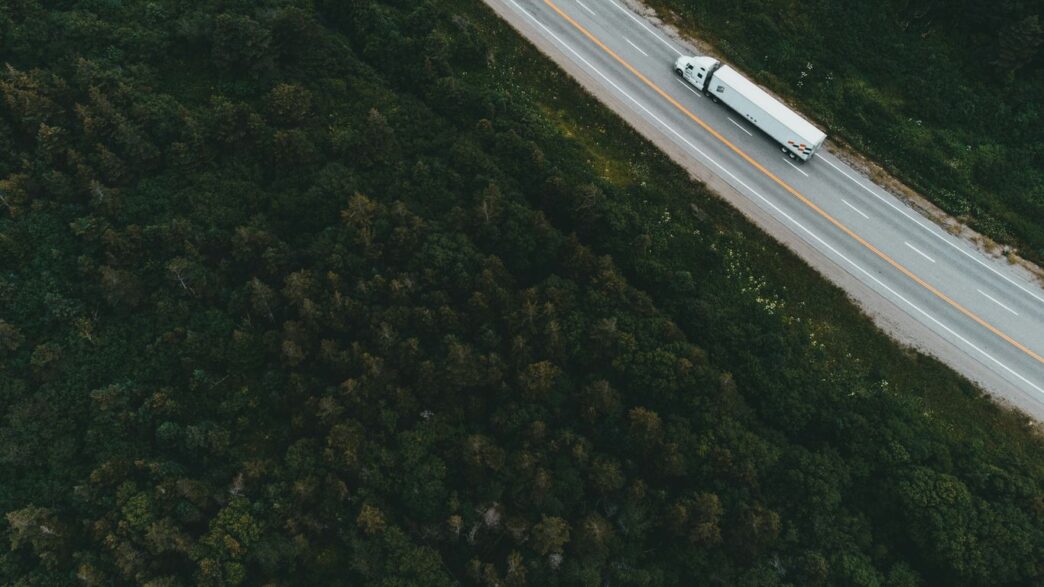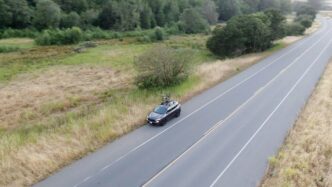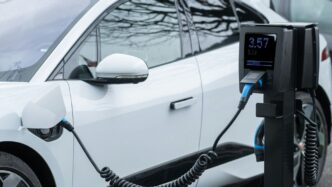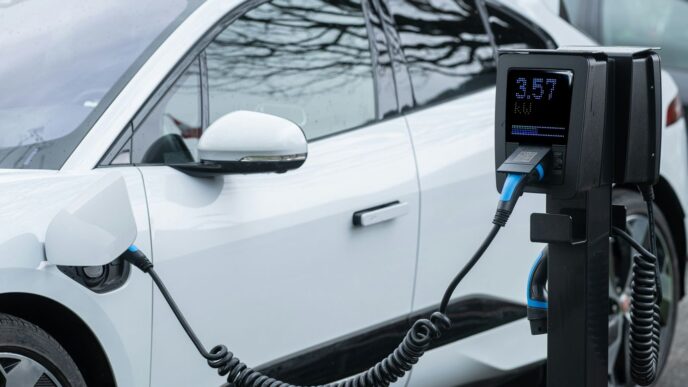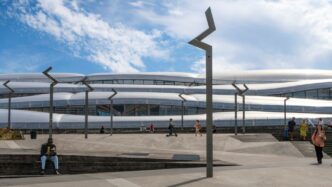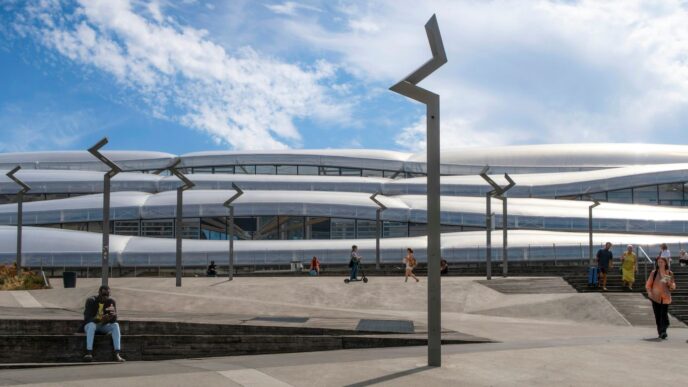Kodiak Self-Driving Truck: A New Era in Logistics
Revolutionizing Freight Transportation
It feels like just yesterday we were talking about self-driving cars, and now, the big rigs are getting the autonomous treatment. Kodiak Robotics is really pushing the envelope here, aiming to change how goods get from point A to point B. Think about it: long-haul trucking is a tough job, with drivers often out for weeks at a time. Kodiak’s technology aims to make this process more efficient and safer by taking the human driver out of the equation for large portions of the journey. They’re not just talking about it either; they’ve actually put their trucks to work. It’s a pretty big deal for the whole logistics world.
The Kodiak Driver Technology
So, what exactly is this "Kodiak Driver"? It’s basically the brain and nervous system for their autonomous trucks. They’ve developed a system that uses a bunch of sensors – cameras, radar, lidar – to see everything around the truck, kind of like how we use our eyes and ears. This gives it a 360-degree view, which is pretty important when you’re moving a massive vehicle. The system is designed to be adaptable, meaning it can be put on different types of trucks. They’ve also built in backup systems for steering and braking, because, you know, safety first. It’s all about making sure the truck can handle itself, even in tricky situations.
Partnerships Driving Innovation
Kodiak isn’t trying to do this all alone. They’ve teamed up with some big names in the industry. You’ve got tire companies like Bridgestone, big trucking outfits like J.B. Hunt and Werner Enterprises, and even the U.S. Department of Defense. These partnerships are key. For example, working with Bridgestone and J.B. Hunt, they’re testing out autonomous routes for transporting tires. And the military contract? That shows how versatile their technology is, being able to handle different kinds of missions, even off-road. It’s this kind of collaboration that really helps move things forward, getting real-world feedback and proving the technology works.
The Technology Behind Kodiak’s Autonomous Trucks

So, how does this whole Kodiak self-driving truck thing actually work? It’s not just one magic piece of tech, but a whole system working together. Think of it like a really smart, really aware driver, but made of sensors and computers.
Advanced Sensor Suite for 360-Degree Awareness
Forget your side mirrors. Kodiak trucks are kitted out with a bunch of sensors and cameras all around. This gives the truck a complete view of everything happening, all the time. We’re talking about seeing what’s ahead, behind, and to the sides, even in bad weather or at night. This constant stream of information lets the truck make quick decisions about speed, changing lanes, and braking. It’s like having eyes everywhere at once.
Redundant Systems for Enhanced Safety
Safety is obviously a huge deal when you’re talking about trucks on the road. Kodiak builds its system with backups for the important stuff. If one part of the steering or braking system were to have an issue, there’s another one ready to take over. This redundancy is key to making sure the truck can always be controlled safely, even if something unexpected happens. It’s all about having layers of protection.
Modular Hardware and Software Design
One of the cool things about Kodiak’s approach is how they’ve designed their system to be flexible. The hardware and software are built in a modular way. This means they can swap out or update different parts without having to rebuild the whole system. It also makes it easier to put the Kodiak Driver technology into different types of trucks, whether they’re brand new or older models. They even have special versions, like their DefensePods, adapted for military vehicles. This modularity helps them adapt quickly and keep improving the technology over time.
Real-World Deployment and Commercial Success
It’s one thing to talk about self-driving trucks in a lab, but it’s another thing entirely to see them actually out there, doing the work. Kodiak has been busy putting its technology to the test in real situations, and it’s starting to pay off.
Extensive Autonomous Miles Logged
Kodiak’s system, called the Kodiak Driver, has racked up a serious number of miles – over 2.6 million, to be exact. They’ve been driving these trucks in all sorts of conditions, not just on perfect, sunny days. This isn’t just about hitting a number; it’s about proving the tech works when things get tricky, like in construction zones or during heavy rain. They’ve even started driving on local roads, which is way more complicated than just cruising down the highway. Think stop signs, busy intersections, and tight turns – the stuff that really tests a driver, human or otherwise.
Driver-as-a-Service Business Model
So, how does Kodiak make money with all this? They’ve come up with a business model called "Driver-as-a-Service." Instead of selling the trucks outright, they charge customers a fee, either based on the truck itself or per mile driven. This seems to be working well, especially with their partner Atlas Energy Solutions. They’ve already got a commitment from Atlas to order 100 trucks, which is a pretty big deal. This approach means Kodiak keeps ownership and responsibility for the autonomous tech, which might make it easier for trucking companies to adopt.
Successful Commercial Operations
Kodiak isn’t just testing; they’re operating commercially. They’ve been running driverless trucks in West Texas, specifically in the Permian Basin, for over 750 hours. That’s a lot of hours with no human driver behind the wheel, hauling actual freight. They’ve also expanded their operations with new facilities, including one in Georgia and another in Houston, all managed by a 24/7 Command Center. This setup helps them keep an eye on all their trucks and make sure deliveries happen safely and on time. They’ve even partnered with big names like Bridgestone, J.B. Hunt, and Werner Enterprises, showing that other major players in the industry see the potential here.
Expanding Operational Design Domain
Kodiak’s autonomous technology isn’t just sticking to the well-traveled highways anymore. They’ve been busy pushing the boundaries of where their self-driving trucks can operate, moving beyond just long-haul routes. This expansion is a big deal because it means autonomous trucks can handle more complex jobs and go to more places.
From Highways to Local Roads
For a long time, the focus for self-driving trucks was pretty much limited to the interstate system. It makes sense, right? Highways are generally predictable. But Kodiak started taking their trucks off the highway in 2023. They began driving end-to-end routes, which means the trucks had to deal with things like stop signs, busy intersections, and tighter turns you find in regular towns and cities. This move onto local roads shows the system is getting smarter and more adaptable to everyday driving scenarios. It’s one thing to cruise at 70 mph, but it’s another to navigate a busy downtown area.
Navigating Diverse Terrains and Conditions
Kodiak didn’t stop at city streets. They’ve also taken their technology off paved surfaces entirely, working with the U.S. Army. This means their trucks have been tested on gravel, dirt, and through conditions that are way tougher than a typical highway. Think dust, mud, and even water. This kind of testing is pretty unique and shows how flexible the Kodiak Driver system is. They’ve managed to expand their operational area really quickly, proving their system can handle commercial trucking needs and also more rugged military environments where GPS might not always be reliable or the ground is uneven.
Military Applications and Adaptability
This work with the military is a pretty clear example of how adaptable Kodiak’s tech is. They’ve taken their core autonomous driving system and adapted it for off-road use. They even put together a new, off-road-ready vehicle with the Kodiak Driver in less than six months. This shows that the system isn’t just built for one specific truck or one type of road. It’s modular and can be moved around, which is a huge advantage. They’ve even put the Kodiak Driver into different types of vehicles, including an F-150 for the Department of Defense. This flexibility means the technology could potentially be used in a lot of different ways, not just for hauling freight.
Economic and Environmental Impacts of Autonomous Trucking
So, what’s the big deal with these self-driving trucks, besides just being cool tech? Well, it turns out they could really shake things up, both for our wallets and for the planet.
Reducing Logistics Costs
One of the most talked-about benefits is how much money could be saved. Think about it: truck drivers are a huge part of the cost of moving goods. We’re talking about 40-50% of the total expenses, sometimes more. If you take the driver out of the equation, those costs can drop significantly. Kodiak’s approach aims to cut these labor expenses by up to 45%, which is a pretty massive number. Plus, these trucks don’t need to stop for sleep breaks like human drivers do. They can just keep rolling, making the whole process faster and more efficient. This means goods can get where they need to go quicker, and companies can move more stuff with fewer trucks.
Improving Fuel Efficiency and Sustainability
Beyond just saving money on labor, these autonomous trucks are also designed to be more fuel-efficient. They use smart computer programs to drive in a way that uses less gas. This means less braking, less accelerating unnecessarily, and smoother overall operation. For example, Kodiak’s trucks use algorithms to avoid jerky movements that waste fuel. This not only saves money on gas but also means fewer emissions. If we’re talking about a whole fleet of these trucks running across the country, the reduction in fuel consumption and pollution could be substantial. Some companies are even looking at electric versions, which would cut down on carbon footprints even further.
Addressing Labor Shortages
Another big issue in the trucking industry is the shortage of drivers. It’s a tough job, and finding enough people to do it has become a real challenge. Autonomous trucks could help fill this gap. While it’s a sensitive topic because of job displacement concerns, the reality is that the industry needs more capacity. By having trucks that can operate without a human driver, companies can keep goods moving even when there aren’t enough people to drive. This could help keep the supply chain running smoothly, especially for long-haul routes where driver shortages are often most acute.
Challenges and Future of Kodiak Self-Driving Trucks
So, while Kodiak’s self-driving trucks are already doing some pretty cool stuff, it’s not all smooth sailing. There are definitely some bumps in the road ahead, both with the tech itself and how the world is going to accept it.
Technological and Operational Hurdles
Even though Kodiak has logged millions of miles, making these trucks work everywhere, all the time, is still a big ask. Think about really bad weather – heavy snow, fog so thick you can barely see your hand in front of your face. The sensors and systems need to be super reliable in all those conditions. Plus, keeping these complex machines running smoothly, especially when they’re out on long hauls, requires a solid plan for maintenance and quick fixes. The goal is to get to a point where these trucks can handle almost any situation without needing a human to step in. That’s a tall order, and it means constant tweaking and improving the software and hardware.
Regulatory Landscape and Compliance
This is a huge one. Right now, the rules for self-driving trucks are still being figured out. Different states might have different laws, and figuring out how to comply with all of them is a headache. When a truck is fully driverless, who’s responsible if something goes wrong? Is it the company that made the truck, the company that put the self-driving tech in, or the company that owns the truck? These are big questions that need clear answers before these trucks can really take over the highways. It’s not just about making the tech work; it’s about making sure it works within the law.
Public Perception and Adoption
Let’s be honest, people are still a bit wary of self-driving vehicles. Truck drivers might worry about losing their jobs, and the general public might feel uneasy sharing the road with trucks that don’t have a person behind the wheel. Building trust is key. Kodiak needs to show, time and time again, that its trucks are safe and reliable. This means being open about how the technology works and demonstrating its benefits, like potentially reducing accidents caused by human error and making deliveries more efficient. Getting people comfortable with the idea is just as important as perfecting the technology itself.
The Road Ahead for Autonomous Trucks
So, where does all this leave us with self-driving trucks like Kodiak’s? It’s clear that the technology is moving fast. We’ve seen these trucks handle millions of miles, working with big names in shipping and even the military. They’re getting smarter, more adaptable, and companies are making real progress in getting them out on the road for daily deliveries. But, it’s not quite a ‘set it and forget it’ situation yet. There are still hurdles to clear, like making sure the tech works perfectly in all kinds of weather and getting everyone on the same page with rules and regulations. Plus, there’s the whole public trust aspect to consider. Still, the potential is huge – think about safer roads, more efficient deliveries, and maybe even lower costs down the line. It feels like we’re on the cusp of a big change in how goods get from here to there, and Kodiak is definitely a company to watch in this evolving story.


